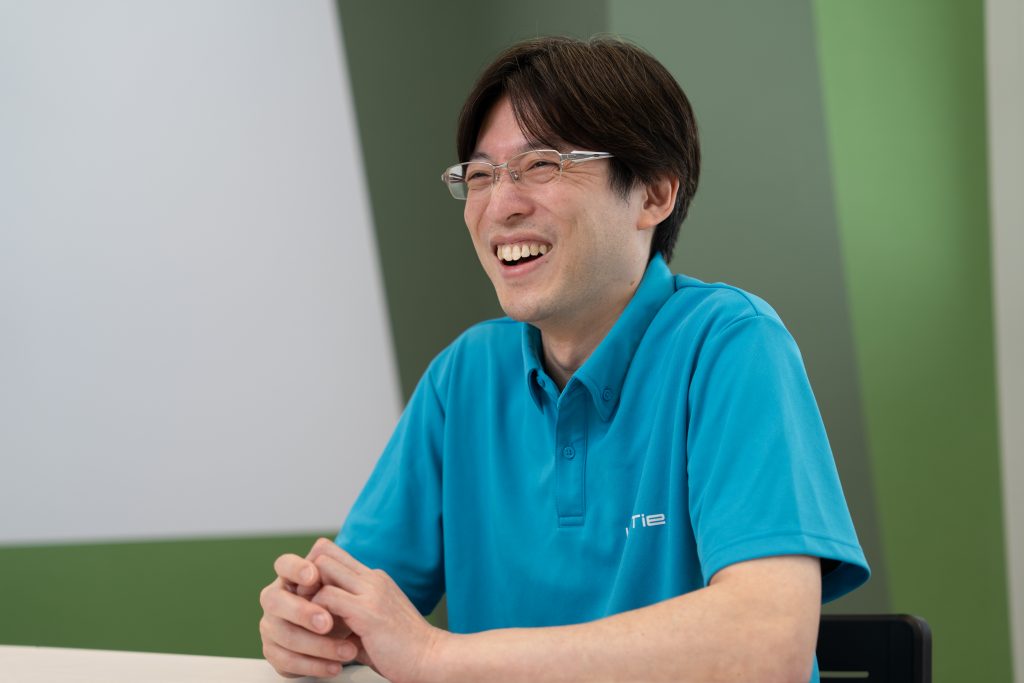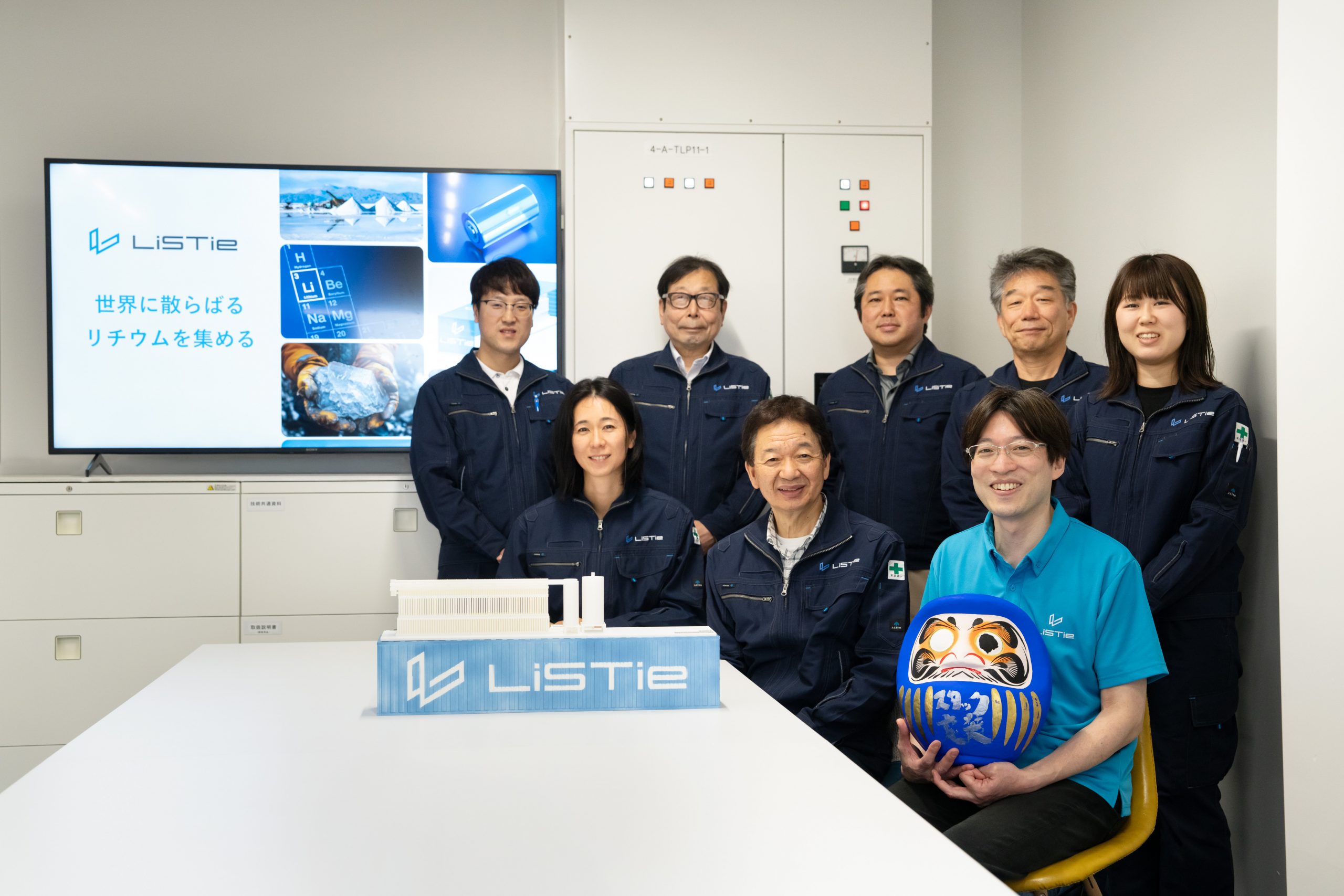Aiming for social implementation of proprietary technologies that efficiently recover ultra-high purity lithium
First of all, please introduce the details of your business.
Mr. Hoshino: We aim to become a global social implementation of LiSMIC, a super high-purity lithium recovery technology developed when I was a researcher at QST (Quantum Science and Technology Research and Development Agency), which collects lithium in liquids at ultra-high purity, efficient and low cost. The company's headquarters is located in Rokusho Village in Aomori Prefecture, and Kashiwa-no-ha Lab is developing a LiSMIC unit for container-type social implementation lithium recovery equipment.
What is a container-type social implementation device?
Mr. Hoshino: It is planned to be the same size (approximately 2.5m x 2.5m x 12m) as the "40-foot container" often seen at the port. There are many ceramic special ion conductive membranes inside, and when liquid is passed here, only lithium adsorbed into the conductive membrane, and finally ultra-high concentrations of lithium are recovered.
Please tell us about the research of Mr. Hoshino in the QST era.
Mr. Hoshino: At QST's Rokkasho Fusion Energy Laboratory (Rokkasho Village, Aomori Prefecture), I was studying how to separate and recover lithium used for the production of fuel (tritium) for nuclear fusion reactors. At that time, I was also working on a dreamy research called "separating lithium from seawater." Since seawater contains almost inexhaustible lithium, it can be said that it is an ideal fuel source. In this research, we received the 5th New Chemical Technology Research Award.
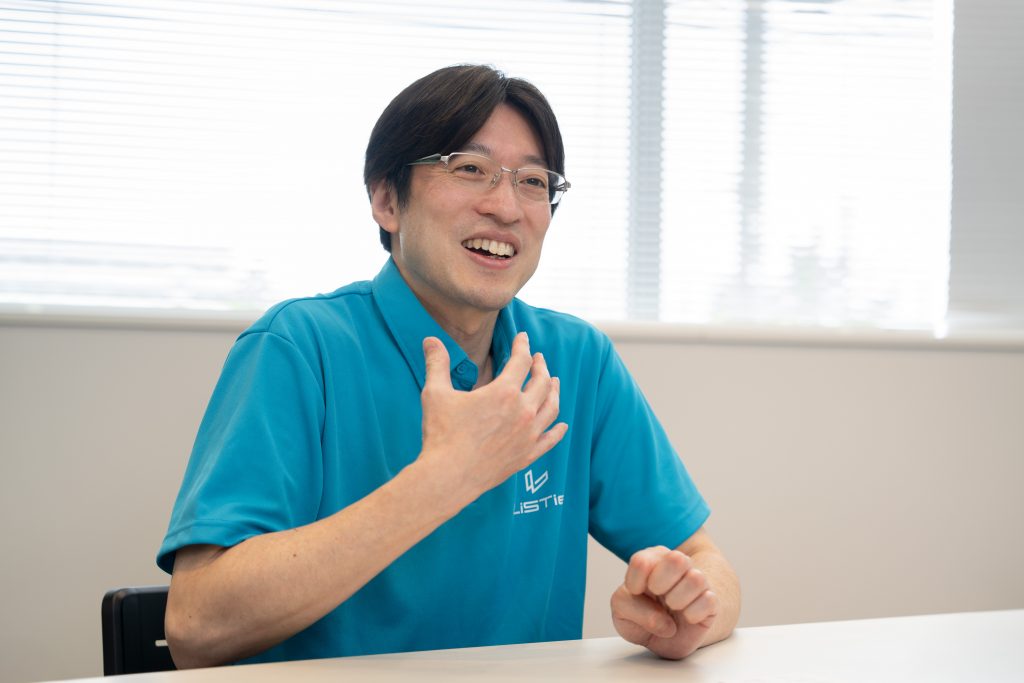
Lithium is expected to be used in various ways, such as fusion power generation.
First of all, what is "lithium"?
Mr. Hoshino: Lithium is a kind of metal element. Currently, it is used for rechargeable batteries (lithium batteries) for various products from smartphones to electric vehicles. In particular, electric vehicles have a large battery size, and with the spread of electric vehicles, the demand for lithium is rapidly increasing. Furthermore, it is expected that the number of electric vehicles that will be scrapped will increase in the future, and the "circular economy" that reuses recovered lithium batteries will also be important. Since our lithium recovery technology can be recovered from batteries, we are proud to be able to contribute to a recycling-oriented society.
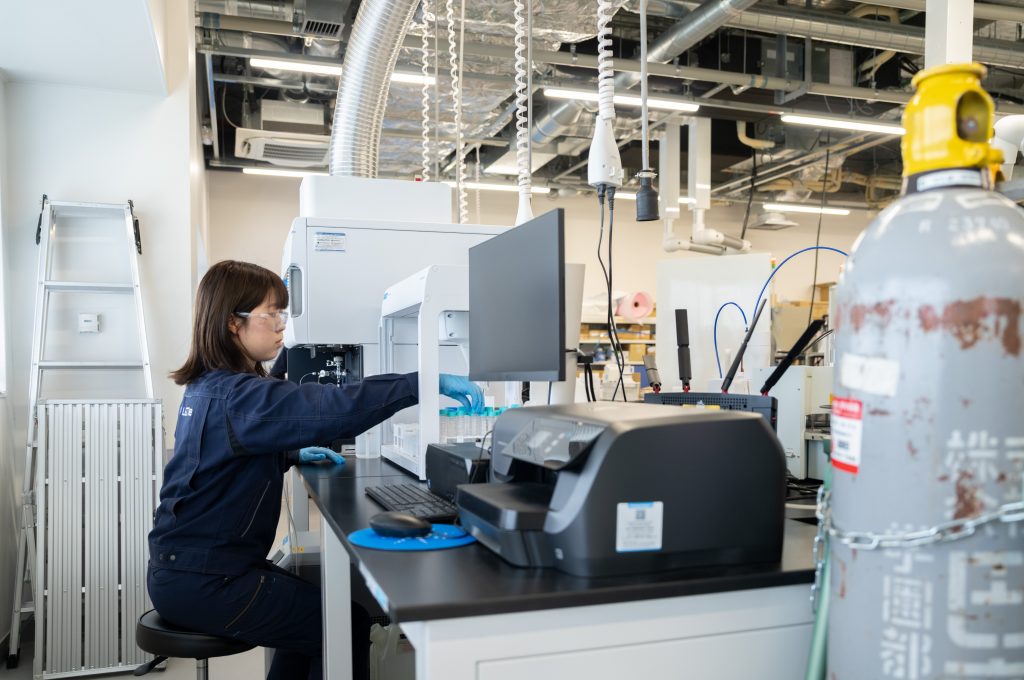
Mr. Hoshino: In addition, lithium will be used in fuel production for future power generation technology "fusion power generation". Fuels for fusion power generation are deuterium and tritium (tritium), of which tritium is almost non-existent in nature, so we artificially manufacture tritium from lithium using neutrons generated during a fusion reaction. If nuclear fusion power generation is put into practical use and lithium can be procured in Japan, the electricity situation in Japan, which has relied on imported fuels, will change significantly.
Lithium mining sites seem to be very limited, but why?
Mr. Hoshino: Currently, lithium is collected only in some areas, such as the lithium mine in Australia and the lithium salt lake in South America. In fact, lithium itself has been on the ground for about 300 years, but there are few places where lithium can be obtained using the current recovery method. This recovery method uses a "solvent extraction method", but in the process, a large amount of chemical substances are used to remove impurities, which has a large environmental impact. Therefore, we are currently mining preferentially from places where the impurities are low. However, since demand for lithium will continue to increase in the future, even if there are many impurities, it will be necessary to use it. On the other hand, our technology is not a method of removing impurities, but a method of extracting lithium that we want to pass through the membrane, so it can be recovered at a low environmental load regardless of the concentration of impurities.
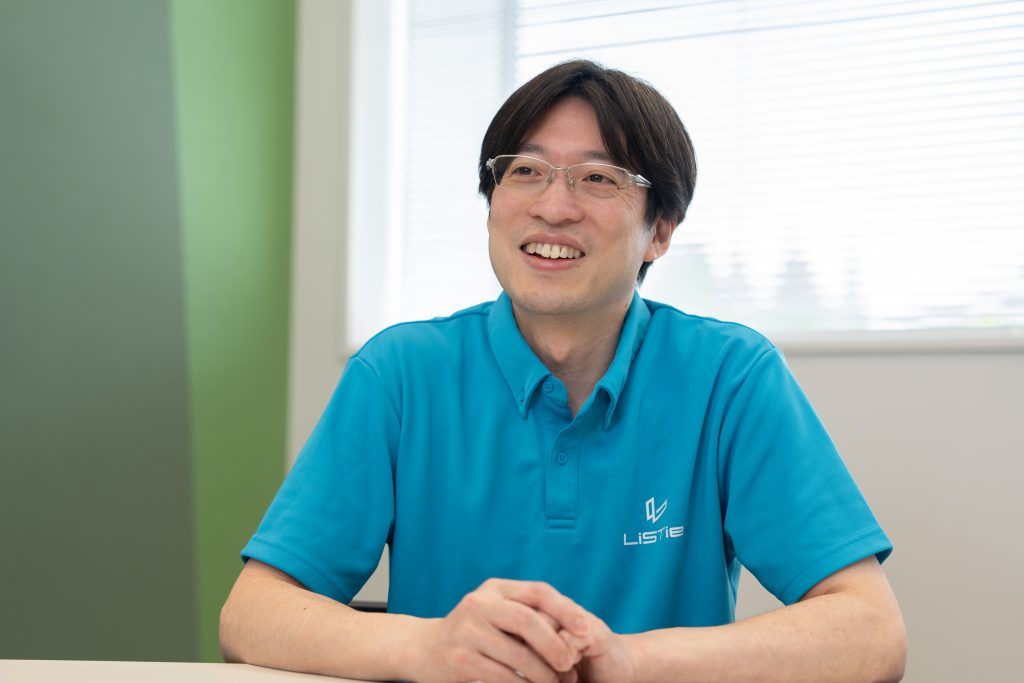
We set up Kashiwa-no-ha Lab in search of places necessary for the development of container-type equipment.
Please tell us how you moved into Mitsui Link Lab Kashiwa-no-ha 1.
Mr. Hoshino: Our aim for lithium recovery equipment is quite large, equivalent to a 40-foot container, so we were looking for a lab with a size of more than 200 square meters at the development stage. At first, I couldn't find it easily, but I found a suitable space for Mitsui Link Lab Kashiwa-no-ha 1 and moved in.
Is there any place where you actually moved in and thought "this was good"?
Mr. Hoshino: It's good that the building is clean. When recruiting new human resources, if the building is clean, it seems that people think that "I want to work in such a workplace."
Do you have any further expectations in the future?
Mr. Hoshino: Originally, our business is a new field of deeptech, not life science, which is the main area of residents, so we had few opportunities to interact with other companies in the same lab until now, but in the future we would like to increase our interaction with you a little more. It will take some time to get out of the Kashiwa-no-ha area to Tokyo, so we look forward to networking opportunities that can be completed only in the Kashiwa-no-ha area.
Please tell us about your future business prospects.
Mr. Hoshino: First of all, we would like to sell our LiSMIC unit for lithium recovery equipment to companies in Australia and South America, where lithium excavations are currently thriving. In addition, due to the structure of the collection equipment, the performance of the conduction film will decrease after 1 to 2 years after use, so continuous maintenance will also be a regular source of income. In the operation of equipment, we would like to play a consulting role in providing technical guidance to companies that have introduced our products on how to recover lithium more efficiently. And if nuclear fusion power generation starts to move in earnest and demand for tritium further increases, we would like to become a "company that manufactures lithium necessary for the production of tritium." However, according to an international joint project aiming for fusion power generation, the demonstration of power generation by operating a deuterium and tritium fusion reactor is scheduled for 2039, so it seems to be a story ahead of time (laughs).
